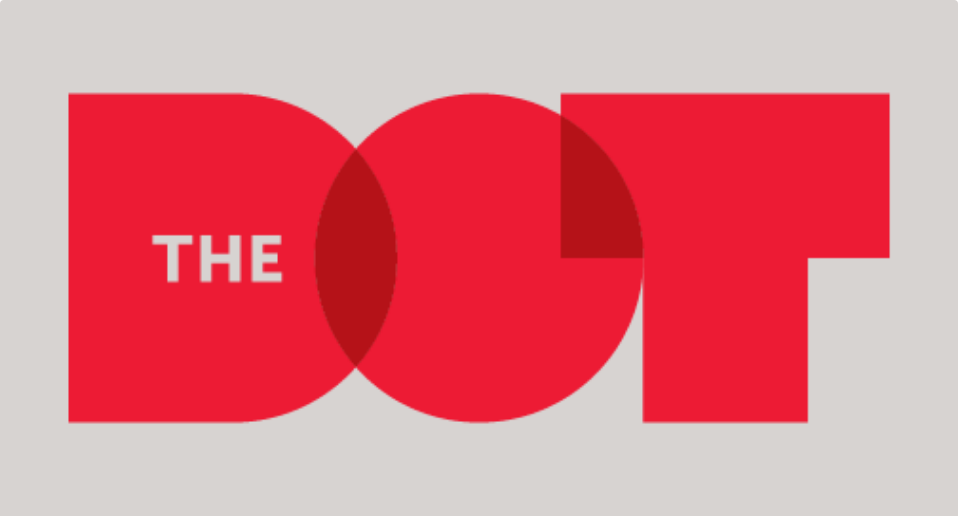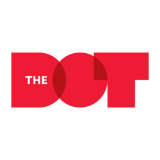How to align paid media, digital and content strategy across the journey
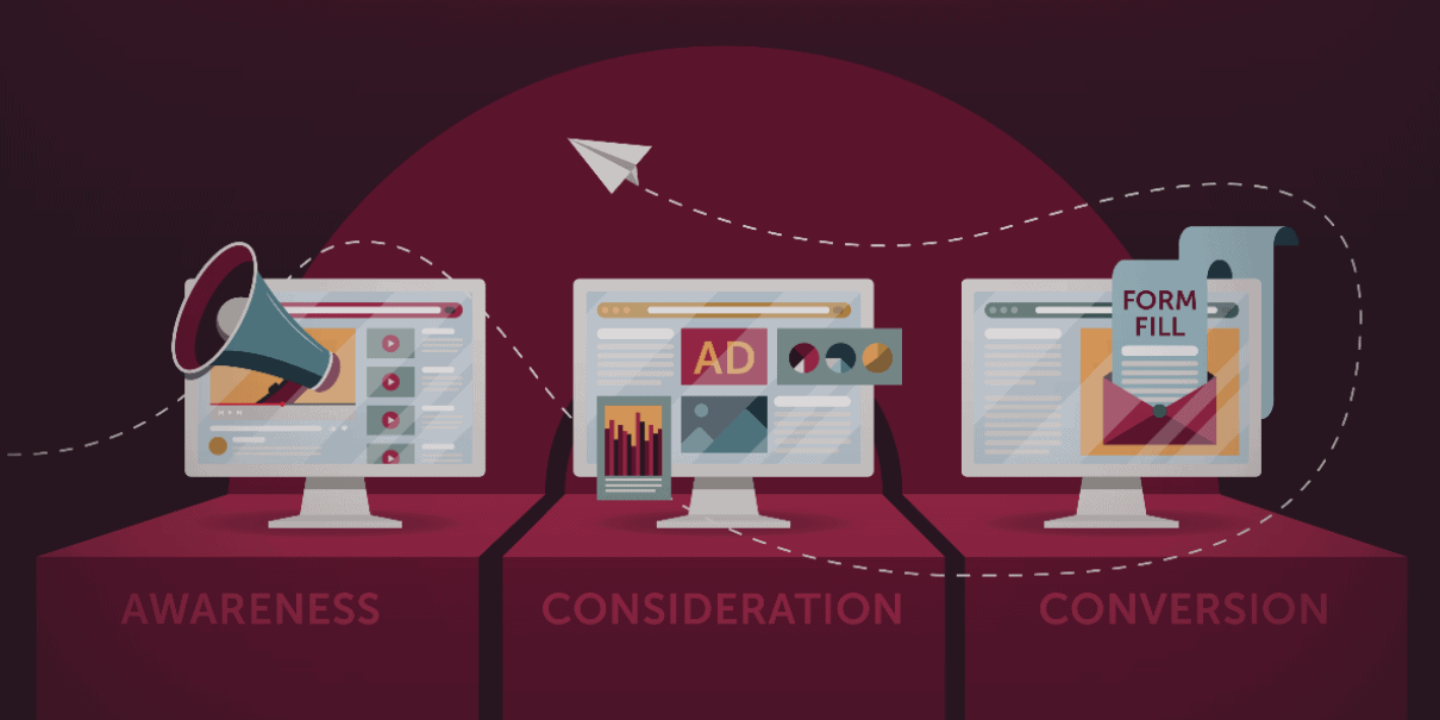
| Red Dot | Public Relations + Content Marketing | Strategy + Planning
If you’ve ever sat down a week before an ad was due and asked yourself, “What should we say here, and where should we drive traffic?” — chances are your paid media, digital and content strategies weren’t developed in tandem.
While you can’t always plan the exact message with total certainty for every single media placement months in advance, you should have an idea of the purpose of every ad placement before buying it.
Ask yourself:
- Are we just looking to grow brand awareness?
- Do we need to convince someone of something?
- Are we trying to generate leads? If so, what type of leads?
Answering these few questions alone will provide a good starting point in planning out your media buy with the right tactics. From there, it’s a matter of planning content and digital strategy to match.
Here’s a look at each phase of the journey and what types of ads, content, landing pages and KPIs are appropriate for each.
Awareness Phase
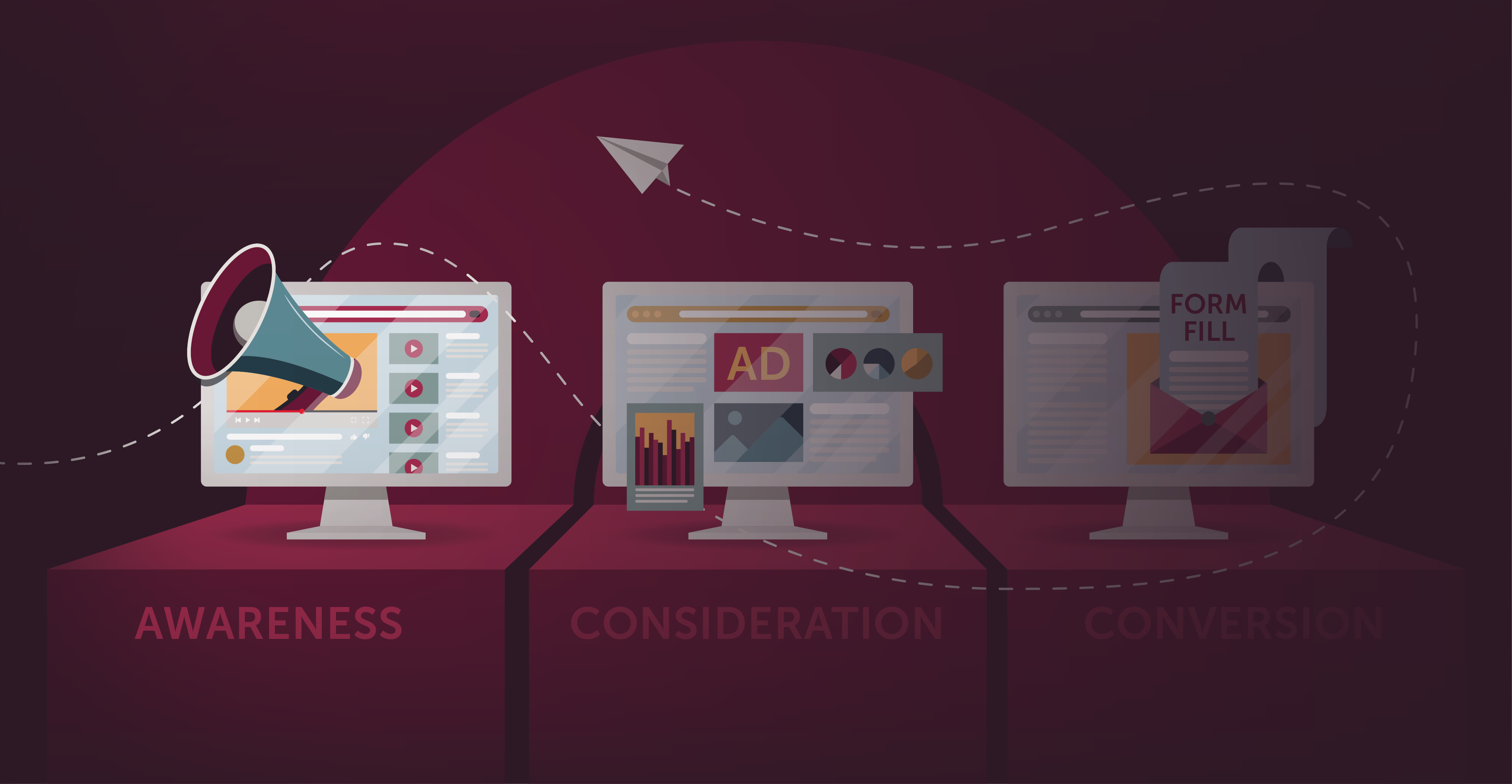
This is the very top of the funnel. You’re seeking to reach people who don’t know to look for your brand, because they’re not aware of it yet.
- Audience goal: Get them to remember your brand and what you do.
- Ad types: Programmatic video, paid social video, OTT, television, sponsorships, e-newsletter banners, high-impression display and print ads.
- Content and messaging: Messaging is typically a higher-level introduction to your company or product. It must be something attention-grabbing and memorable. Competitor research can help you differentiate your positioning to make you stand out.
- Destination considerations: Awareness tactics are less about driving traffic and more about views and ad recall, but an appropriate destination for the awareness phase would typically be an overview landing page or the homepage of your website.
- Primary KPIs: Impressions, cost-per-thousand (CPM), video views, video view rate. Secondary KPIs include click-through rate (CTR) and cost per click (CPC).
Consideration Phase
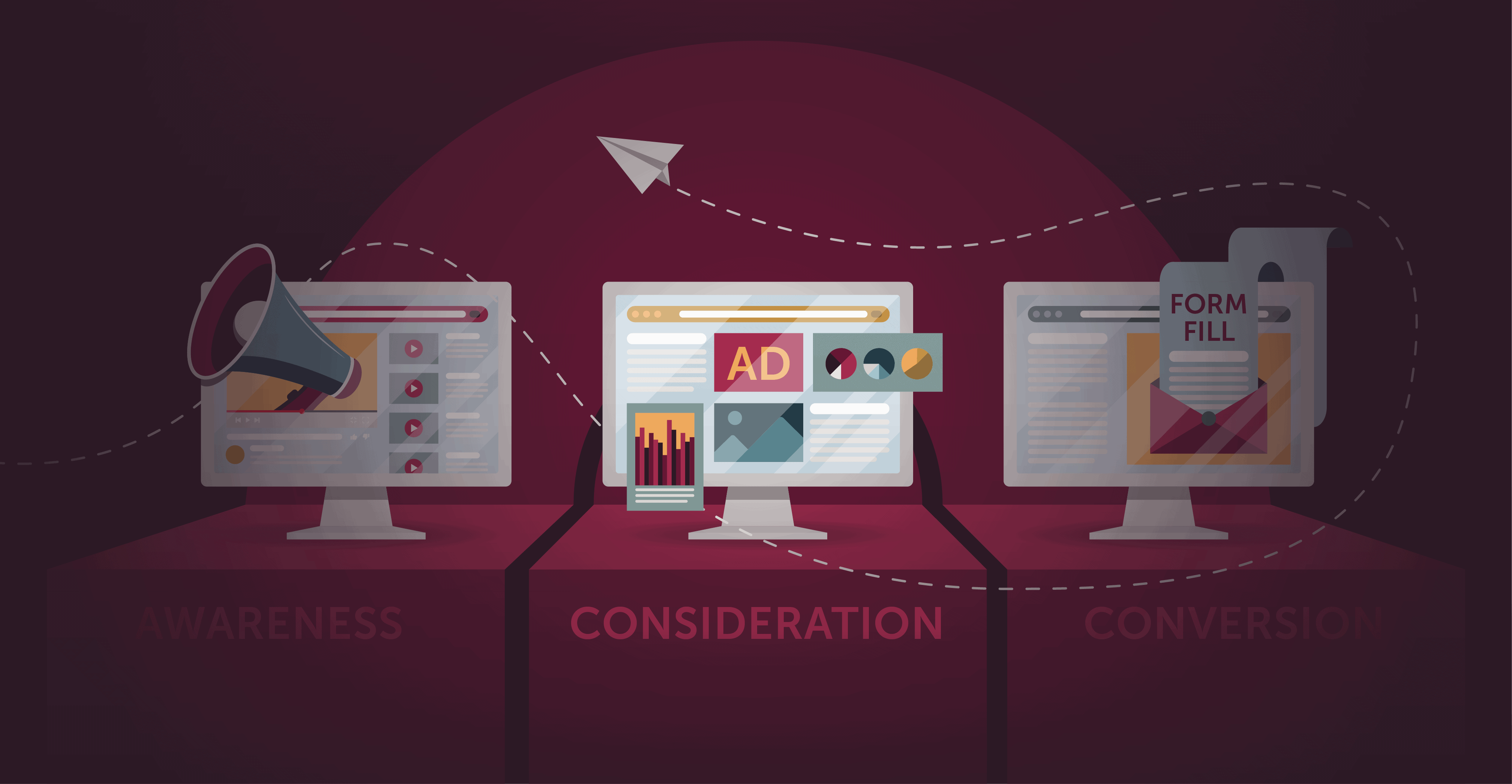
This phase dives deeper into your brand or product — reaching people who are aware of you, but may need some convincing and education. It is heavily influenced by persona insights and audience research — drawing upon known persona pain points. This is where content strategy alignment really starts to come into play.
- Audience goal: Address the unique concerns and questions the audience has, which may be holding them back from selecting your brand.
- Ad types: Programmatic video, paid social (video and traffic), display, native, custom e-blasts, SEM campaigns utilizing branded and non-branded search terms.
- Content and messaging: This content dives deep into key issues and stories that help overcome hurdles the audience may have to adopting your brand. Effective content types include case studies, blog posts, testimonials (written and video), how-to content and landing pages that answer commonly searched questions or topics.
- Destination considerations: The destination should be optimized for consideration. You want the audience to spend some time with your content, digest it and come away feeling more confident about using your brand. Whether you’re driving to a content-rich landing page with a lot of resources or a single piece of content (e.g., a blog post), it’s important to make it easy for the user to continue diving deeper into your site with suggested content.
- Primary KPIs: CTR, CPC, average session duration, average pages per session.
Conversion Phase
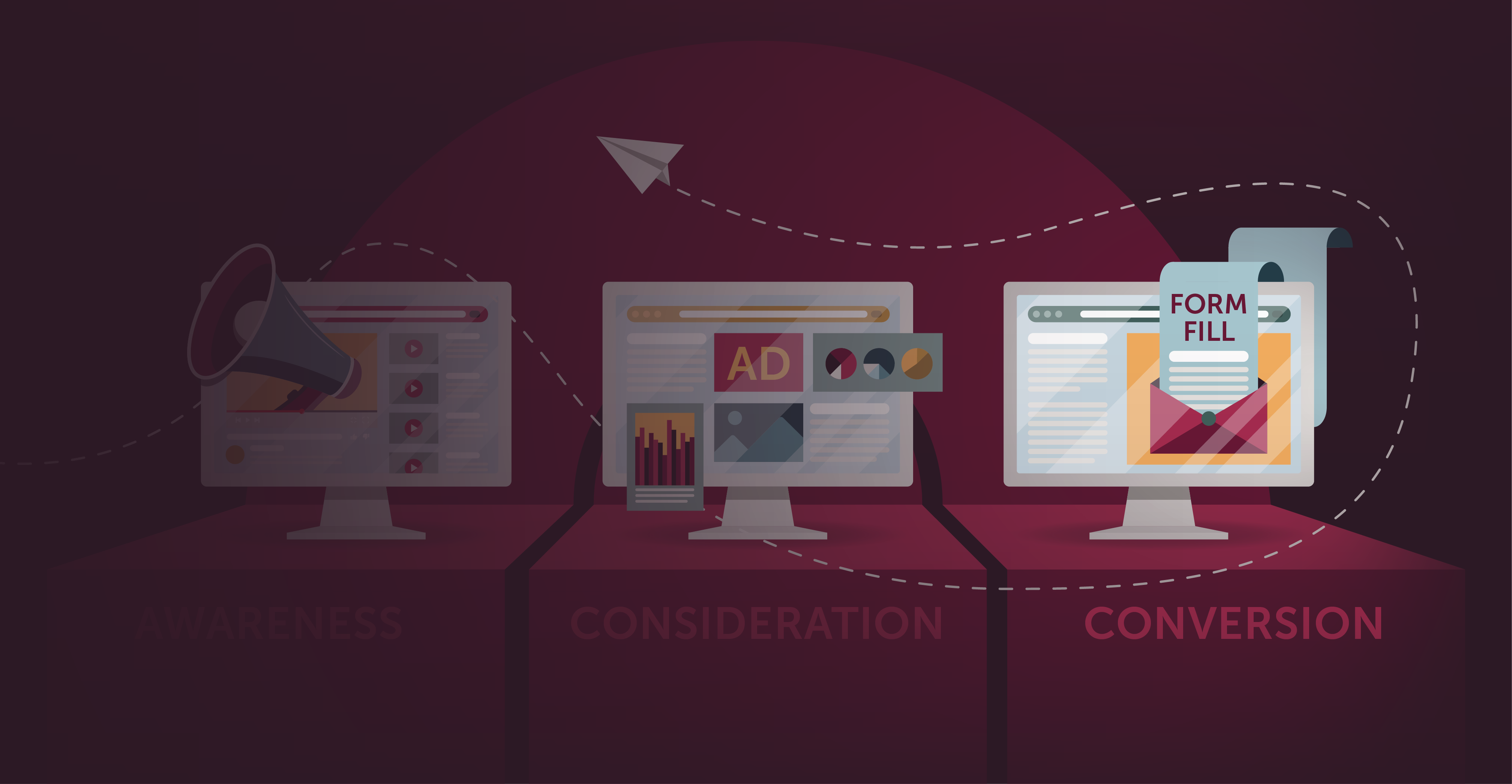
This phase aims to get someone into your CRM for further qualification prior to being ready for a salesperson. This is another phase heavily weighted in both content strategy and digital strategy.
- Audience goal: Capture contact information for a prospect with the intent of further nurturing them — ultimately qualifying them to the point that they’re ready to talk to a salesperson.
- Ad types: Social lead-gen ads (Facebook, Instagram, LinkedIn), retargeted display and native from consideration content pages, custom e-blasts, e-newsletter subscriptions, CRM retargeting.
- Content that converts: The content for the initial portion of the conversion phase must be of such high value and so exclusive that the prospect is willing to register or fill out a form in order to receive it. Examples could include gated white papers, webinars, virtual events, in-depth resource guides, interactive tools, etc. The topics of these pieces of content should be once again heavily influenced by the persona and audience insights – helping overcome their pain points and address their decision-making criteria.
- Destination considerations: The landing page should be optimized for form fills, with the form being prominent and within the first fold. Someone who has arrived there should have already seen in the creative that the expectation by going here is to “register” or “sign up” to receive the requested information. The form should be integrated with the marketing CRM to automatically trigger follow-up communications. The level of information you’re asking for in this form is important. Keeping it simple (e.g., first name, last name and email only) increases conversions, but may require another form fill to convert to a sales opportunity in the future. Whereas, if you have a longer form with all the fields required for your sales CRM, conversions may be lower, but you make conversion to a sales lead easier in the future.
- Content that nurtures: Once a prospect converts based on the initial form fill, this phase becomes a content-heavy nurture exercise. The content they receive should build upon (and not be duplicative with) the content they already requested and received by filling out the form — addressing additional questions and pain points that could be holding them back from talking to a salesperson. These follow-up emails should always offer a stronger CTA to talk to a salesperson, but could be coupled with a lead-scoring strategy that wouldn’t necessarily require an additional action to be taken if they’ve met the “qualified” threshold as you define it, based on engagement level with your content.
- CTAs that convert: “Talk to a salesperson” is perhaps the most direct and clear CTA, but consider CTAs that feel less intrusive and/or offer a value-add experience for the prospect. Examples include: “request a free consultation” or “book a virtual chat with one of our experts” or “request a free analysis.”
- Primary KPIs: CTR, CPC, conversion rate, total leads, cost per lead (CPL), email open rate, email click-to-open rate (CTOR).
What does this look like in practice?
This sounds overly complex, but it doesn’t have to be. Here are just a few tips for making this practical.
- Identify your market position. For the key markets you’re looking to advertise in, consider where you think your prospects are in their journey. Perhaps you’re in one market in which you’re very well known and another you’re just entering. For the former, perhaps focus your campaign efforts strictly on the conversion phase. For the latter, perhaps you take a staggered approach with awareness tactics running Q1-Q4 and consideration tactics beginning to run Q3-Q4 — depending on the buying cycle and decision-making timeframe of your buyers. If you work in an industry with a shorter buying cycle, there’s no reason you couldn’t run tactics for all phases simultaneously.
- Develop a master calendar. Have an easy at-a-glance view of your awareness, consideration and conversion timing for each campaign, and marry that up with the specific persona-based content themes you’re running in each phase. This will help keep all contributing parties (from the media team, content team and digital team) on the same page.
- Develop a measurement dashboard. As you begin running campaigns to focus on consideration and conversion phases, comprehensive measurement dashboards will become more important, so you can get a complete picture of what’s effective across paid media tactics, social tactics, email nurturing and website activity, as a single campaign will likely be inclusive of all.
Need help mapping this out?
Red Dot is here to help. Contact us today for a free consultation (see what we did there?).


